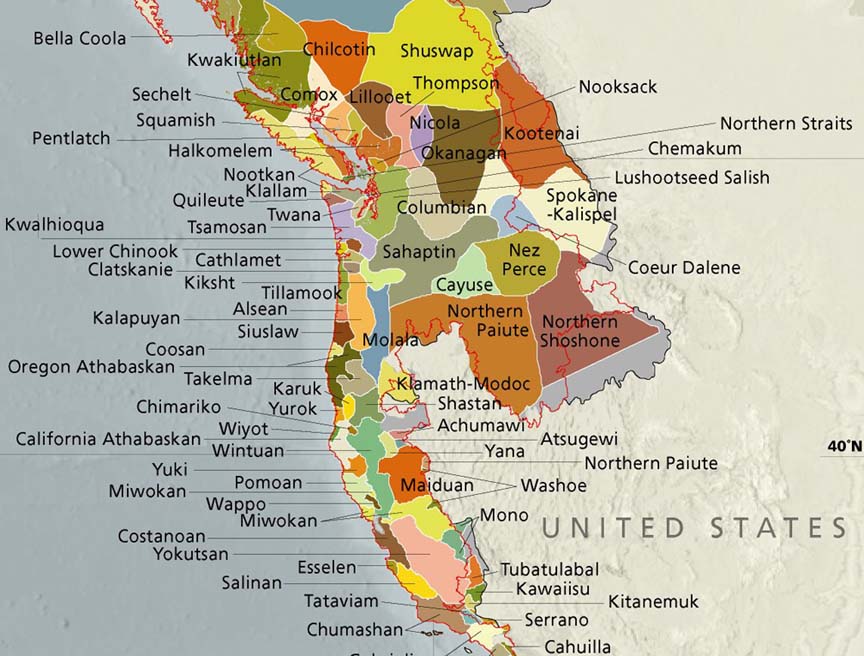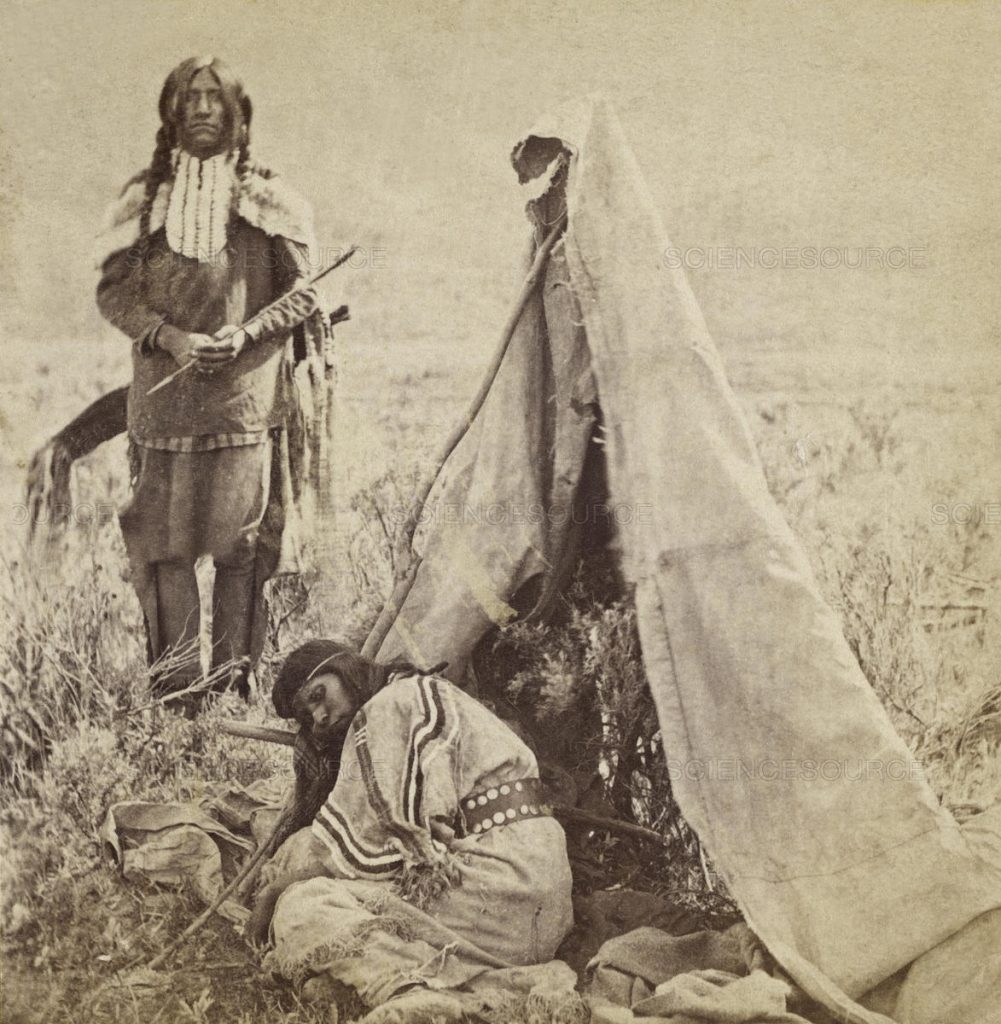

Pacific Northwest Native Americans are also known for their pot-latches-celebrations in which wealthy chiefs and other elite members of the community shared their food and other resources with less-fortunate members of the population. Each of those clan totems would be displayed on the totem pole in front of the longhouse. Because members of other clans married into the clan of a household, one house might be home to members of numerous clans. The people of the Pacific Northwest regarded the totems as heroic protectors of their clans. A clan is a group of families that traces back to a common ancestor. A totem was a representation, usually in the form of an animal, of the clan's ancestor. Wood-carving also produced the important totem poles of many Pacific Northwest tribes. Cedar planks formed the siding for the homes, and cedar tree trunks-spaced evenly from front to rear-served as support posts. Built side by side along the shore facing the sea, each longhouse had canoes moored in the front and one shore-side entrance. Some ornately decorated canoes, holding as many as seventy people, made impressive warships.Ĭedar was also used to make enormous multifamily longhouses, in which forty or fifty people could live.

To travel and fish, they used canoes, hollowed out from the trunks of the tremendously tall cedar trees that lined the Pacific shore. Coastal tribes depended on fish, seals, sea otters, and beached whales for food and materials, which they procured with nets and clubs.

The native people of the Pacific Northwest had well-developed political systems and were among the most prosperous and densely populated of Native Americans. Culture in the early eighteenth centuryĪt the time of first European contact in the early 1700s, the population of all the Pacific Northwest tribes numbered at least seventy thousand, and probably many more.
#Native americans of the pacific northwest free
Marriage between slaves and free people was forbidden to ensure a permanent laboring class. Masters had power of life and limb over their slaves, and slaveĪdults passed their slave status on to their children. The inhabitants of the Pacific Northwest held captives of war as slaves. They did not raise plants or vegetables for their own use, but their hunting-and-gathering economy worked well in the rich coastal environment and enabled them to enjoy a considerable amount of free time. Winter drove them into sheltered bays, where they rode out the cold weather. In the fall, they moved inland to the rivers and streams to harvest salmon. In the summer, they lived by the ocean and spent the bulk of their time fishing. The early peoples of the Pacific Northwest migrated with the seasons. Around 400 bce, improvements in hunting and fishing tools led to a large growth in population. By 1500 bce, they had developed a large coastal trade in obsidian, a volcanic glass used to make knife blades and other sharp tools, and other goods. The earliest known inhabitants of the Pacific Northwest appeared in the area around 8000 bce. Finally, there were the southern Alaskan tribes-the Tlingit (pronounced KLINGK-it), the Ank, the Chilkat, and the Sitka. The Chinooks lived farther north, near the mouth of the Columbia River. The Klamaths and Modocs lived along the present-day border between California and Oregon. The Interior Salish were Native North Americans of the Plateau. Among the Coastal Salish, who lived in northwestern Washington on the Puget Sound and in British Columbia, were the Chehalis (sha-HAY-lis), Nisqualli (nis-KWALL-ee), Cowlitz, Squamish, Comox, Tillamook, and Bella Coola tribes. The Salish were divided into two groups: the Coastal Salish and the Interior Salish. The Nootkas and Kwakiutls (pronounced kwah-kee-OO-tul) lived along the coast of present-day British Columbia and Washington.

The area was home to many different cultures. The Pacific Northwest consists of the northeast corner of the United States including Oregon and Washington, the islands of southern Alaska, and parts of northern Idaho, northwestern Montana, and the coast of British Columbia, Canada. Native North Americans of the Pacific Northwest


 0 kommentar(er)
0 kommentar(er)
